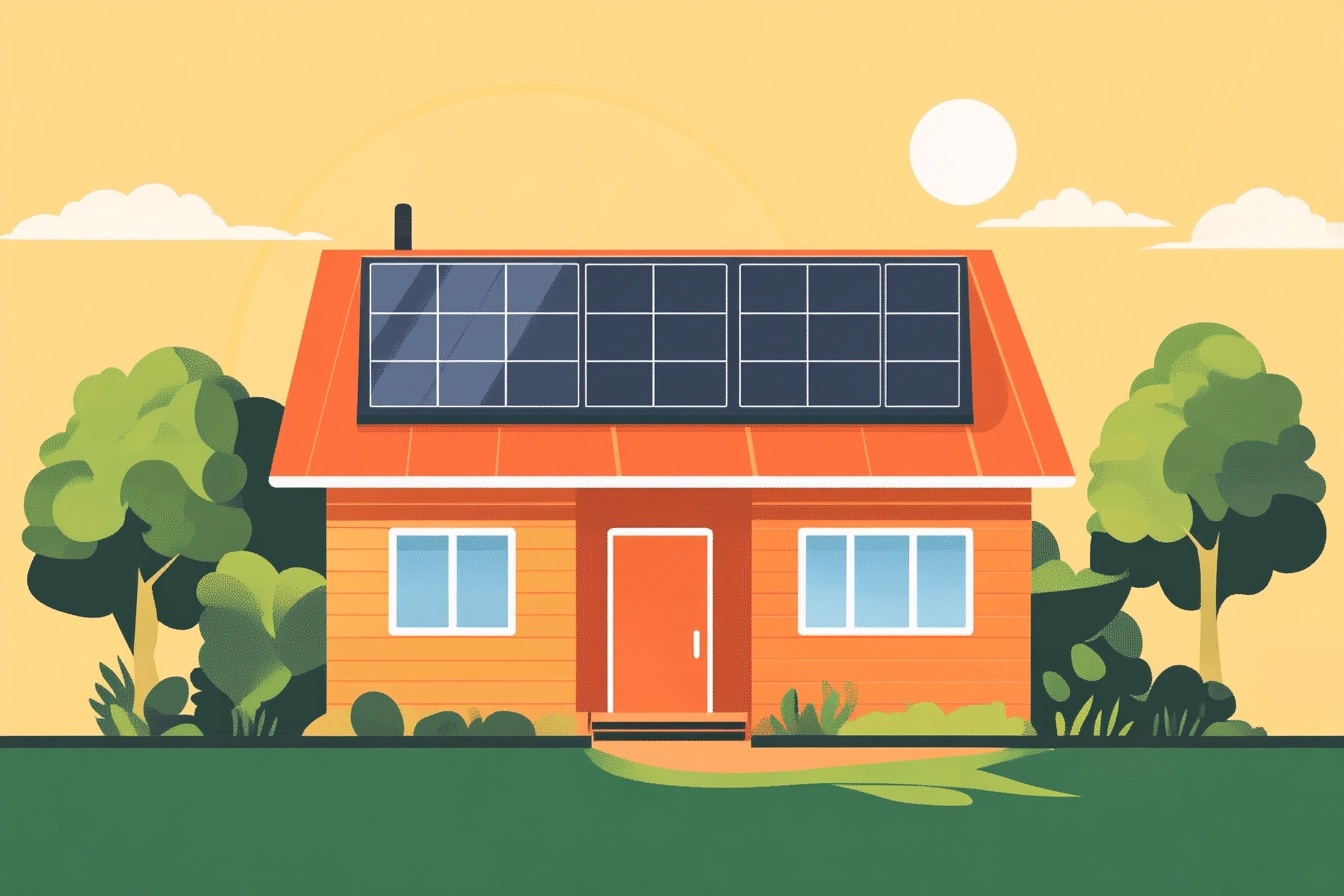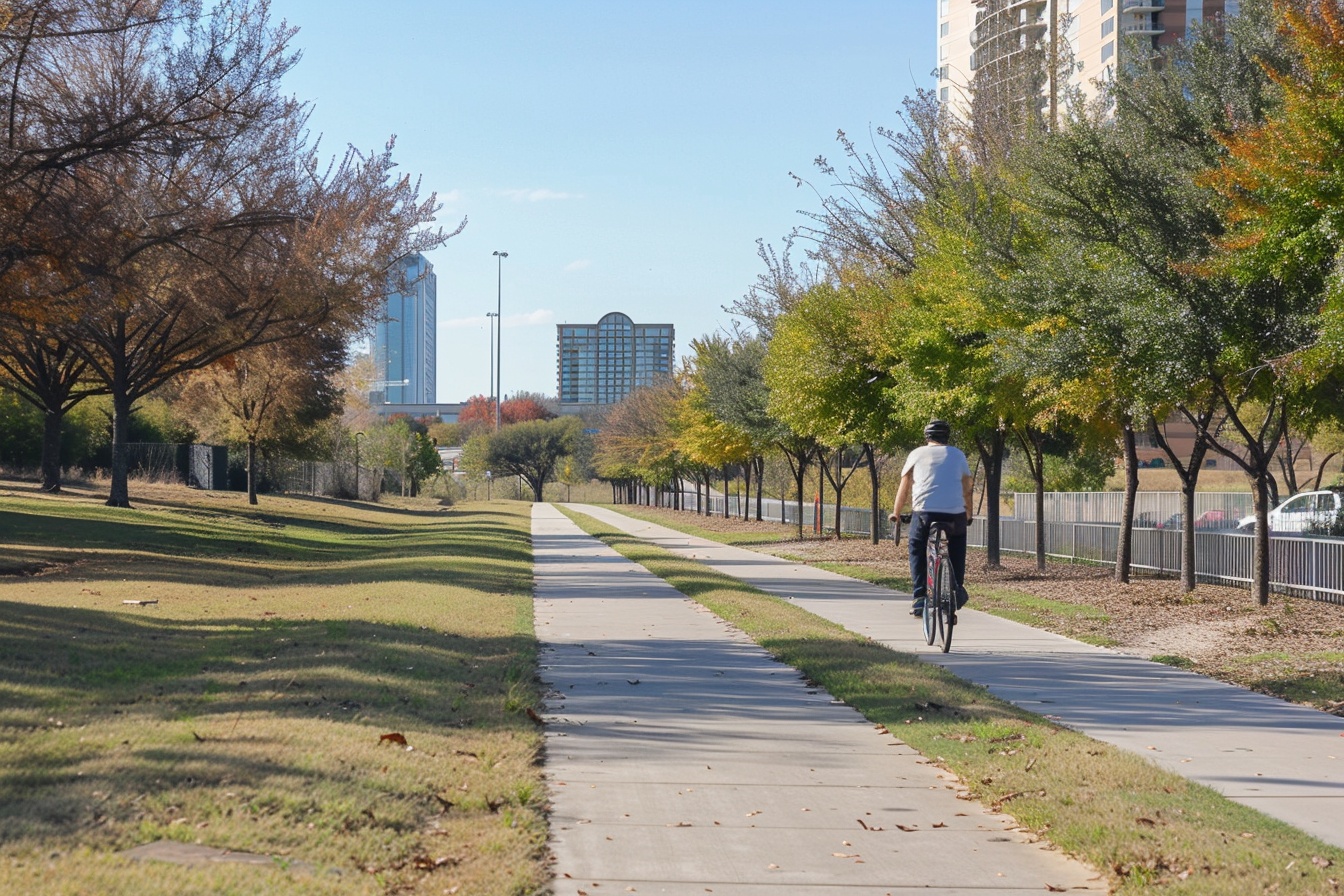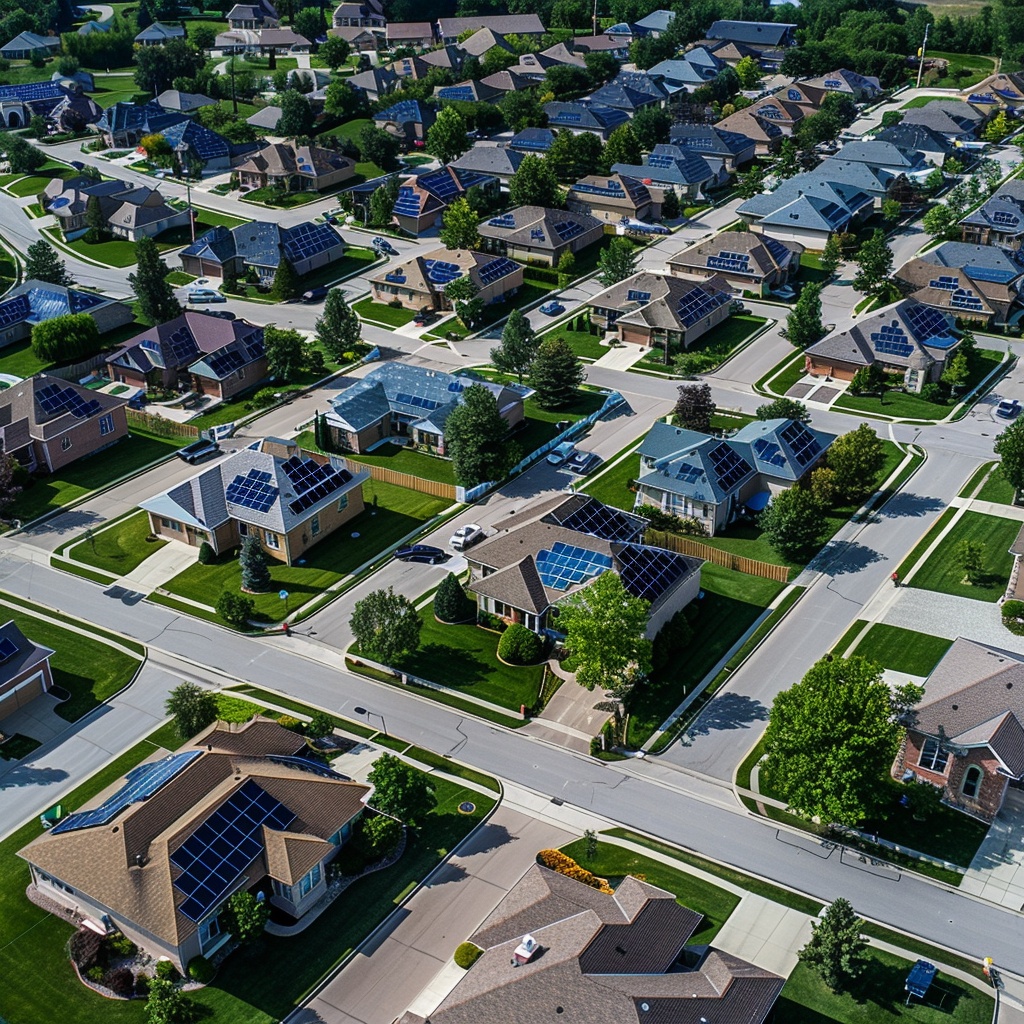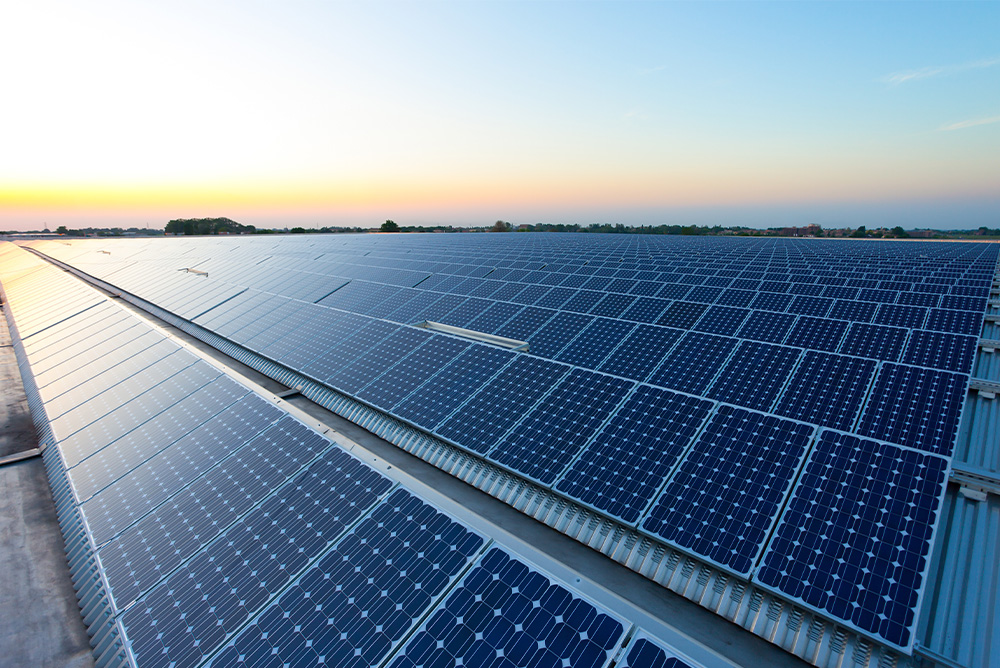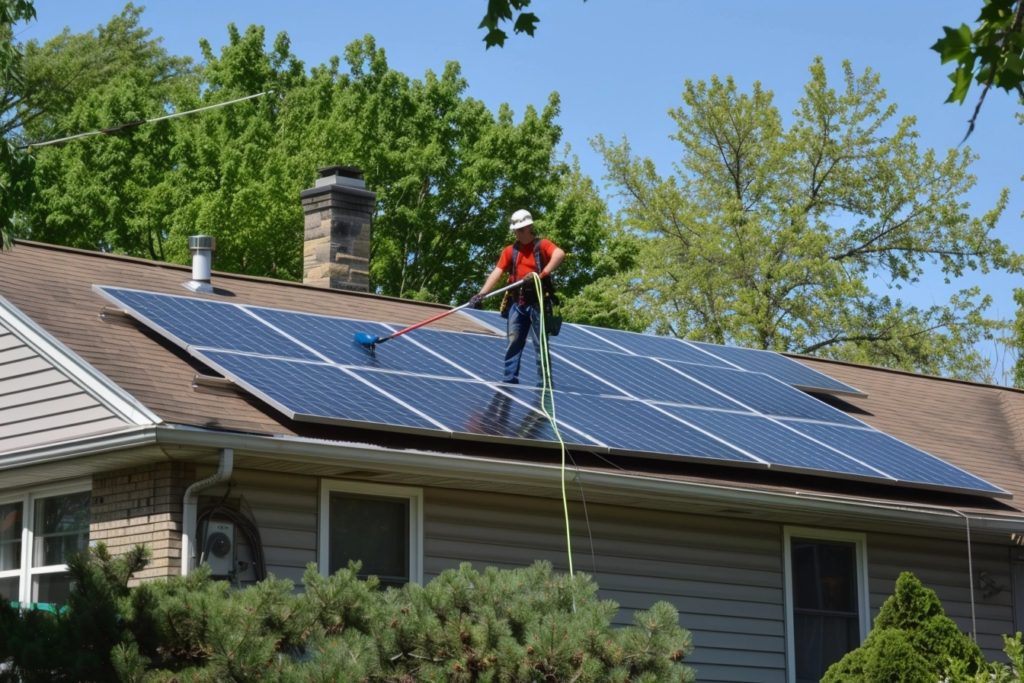Residential solar power has been gaining traction across the United States as more homeowners seek to reduce energy costs and embrace renewable energy. However, the adoption of solar energy varies significantly from state to state. Here’s a countdown from 50 to 1, with 1 being the state with the most residential solar installations in 2024.
50. North Dakota
49. West Virginia
48. South Dakota
47. Montana
46. Nebraska
45. Wyoming
44. Alaska
43. Idaho
42. Mississippi
41. Alabama
40. Kentucky
39. Arkansas
38. Louisiana
37. Missouri
36. Indiana
35. Kansas
34. Ohio
33. Tennessee
32. Iowa
31. Michigan
30. Oklahoma
29. Minnesota
28. Wisconsin
27. Pennsylvania
26. Illinois
25. Virginia
24. South Carolina
23. Nevada
22. Oregon
21. Washington
20. New York
19. Maryland
18. Connecticut
17. Georgia
16. Massachusetts
15. Colorado
14. New Jersey
13. Texas
12. Arizona
11. North Carolina
10. Utah
9. Rhode Island
8. Vermont
7. Florida
6. Hawaii
5. Delaware
4. Nevada
3. New Mexico
2. California
1. Texas
Why Do Some States Lead in Solar Adoption?
Several factors contribute to why certain states rank higher in residential solar adoption:
Sunlight Availability: States like California, Texas, and Florida naturally have more sunlight, making solar energy more viable and attractive. The high solar irradiance ensures that solar panels operate at their full potential.
Incentive Programs: States that rank high typically offer robust incentive programs that make solar installation more affordable. For instance, New Jersey’s Successor Solar Incentive (SuSI) program provides substantial financial incentives, including payouts for generated solar energy. Similarly, Massachusetts has a strong Solar Renewable Energy Credit (SREC) market that incentivizes solar production.
Net Metering: States with favorable net metering policies, like California and New York, allow homeowners to sell excess electricity back to the grid at favorable rates, making solar installations financially beneficial.
High Electricity Rates: In states like Hawaii and Connecticut, the high cost of electricity makes solar power an economically attractive alternative, leading to quicker payback periods for solar installations.
State Policies and Renewable Energy Goals: Many leading states have aggressive renewable energy mandates or goals. California, for instance, has set ambitious targets for renewable energy, which has spurred widespread adoption of solar power.
Economic Incentives: Many states provide grants, rebates, and tax incentives that reduce the upfront costs of solar installations. This financial support is crucial for many homeowners who might otherwise find the initial investment too steep.
Conclusion
The variation in solar adoption across the United States is largely driven by a combination of natural, economic, and policy factors. States with abundant sunshine, strong policy support, and high electricity costs tend to see the highest adoption rates. As more states introduce favorable policies and as the cost of solar continues to fall, we can expect these rankings to evolve, with more states moving up the list.
10 reasons we’ve heard customers say they love solar.
10. Community Impact
Going solar can inspire others in the community to consider renewable energy options. It fosters a culture of sustainability and environmental responsibility, creating a positive ripple effect.
9. Energy Security
Solar energy can contribute to a more secure energy future. By diversifying our energy sources and reducing reliance on imported fuels, solar power enhances national energy security.
8. Job Creation
The solar industry is a significant source of job creation. By going solar, individuals support an industry that provides employment opportunities in manufacturing, installation, and maintenance.
7. Low Maintenance
Solar panels require minimal maintenance. With no moving parts, they are durable and can last a long time with little upkeep, providing a hassle-free energy solution.
6. Technological Advancements
Advancements in solar technology have made panels more efficient and affordable than ever before. Innovations continue to improve the performance and aesthetics of solar systems, making them an attractive option for more homeowners.
5. Possible Government Incentives
Many governments offer incentives, such as tax credits and rebates, to encourage the adoption of solar energy. These financial incentives can significantly offset the initial cost of installing solar panels.
4. Potential for Increased Property Value
Homes equipped with solar panels can often see an increase in property value. Potential buyers are attracted to the prospect of lower energy bills and the eco-friendly benefits of solar energy.
3. Energy Independence
With solar panels, homeowners can produce their own electricity, reducing their dependence on the grid. This independence can be particularly valuable during power outages or in remote areas where grid access is limited if they have batteries as well.
2. Environmental Impact
Solar energy is a clean, renewable resource that reduces our reliance on fossil fuels. By going solar, individuals can significantly lower their carbon footprint and contribute to a healthier planet.
1. Savings on Energy Bills
One of the most compelling reasons people switch to solar energy is the potential for savings on their electricity bills. By generating their own power, homeowners can often reduce their monthly energy costs.
Switching to solar energy offers a multitude of benefits, from financial savings to environmental stewardship. It’s no wonder more and more people are making the switch and loving the results!
What do you think? Are you considering going solar too? 🌞
Solar panels convert sunlight into electricity through a fascinating process called the photovoltaic effect. Here’s how it works:
The Photovoltaic Effect
At the heart of solar energy conversion is the photovoltaic (PV) cell, the basic building block of a solar panel. These cells are typically made from silicon, a semiconductor material. When sunlight strikes a PV cell, it initiates a series of events:
- Photon absorption: Sunlight is composed of tiny packets of energy called photons. When these photons hit the PV cell, they are absorbed by the semiconductor material.
- Electron excitation: The absorbed photons energize electrons within the silicon atoms, causing them to break free from their atomic bonds.
- Electron flow: The PV cell is designed with two layers of silicon – one positively charged (p-type) and one negatively charged (n-type). This creates an electric field that directs the flow of freed electrons, generating an electric current.
- Electricity generation: The movement of these electrons creates a direct current (DC) of electricity.
From Cell to Panel to Array
Individual PV cells are combined to form solar panels, which can then be connected into larger arrays:
- A single PV cell typically produces only 1 or 2 watts of power.
- Multiple cells are electrically connected and packaged into a solar panel (or module).
- Panels can be further combined into arrays to increase the total power output.
Converting DC to AC
The electricity generated by solar panels is direct current (DC), but most household appliances and the power grid use alternating current (AC). To address this:
- Inverters are used to convert the DC electricity from the panels into AC electricity.
- This AC electricity can then be used to power homes, businesses, or fed back into the electrical grid.
Efficiency and Advancements
The efficiency of solar panels has improved significantly over time:
- In the mid-1980s, commercial PV panels averaged less than 10% efficiency.
- By 2015, this had increased to around 15%.
- Today, state-of-the-art modules are approaching 25% efficiency.
- Experimental PV cells for specialized applications have achieved nearly 50% efficiency.
Applications and Benefits
Solar energy has a wide range of applications, from powering small calculators to providing electricity for entire communities. The benefits of solar power include:
- Clean, renewable energy production with no harmful emissions during operation.
- Reduced dependence on fossil fuels and lower carbon footprint.
- Potential for significant cost savings on electricity bills over time.
- Contribution to a more resilient and diversified energy grid.
As technology continues to advance and costs decrease, solar energy is playing an increasingly important role in the global transition to clean, sustainable energy sources. The ability to harness the sun’s vast energy potential through the simple yet ingenious process of photovoltaics represents a bright future for renewable energy.
10. Chicago Riverwalk
- A scenic route along the Chicago River, ideal for short commutes within the downtown area.
9. South Lakefront Trail
- Extends from 71st Street to 31st Street, providing a beautiful lakeside ride, perfect for those living in the southern neighborhoods.
8. North Branch Trail
- A serene path running through forest preserves, connecting the northern suburbs to the city, great for a longer, peaceful commute.
7. Boulevard System
- A historic network of tree-lined boulevards, offering a quieter alternative to main roads for central and west side commuters.
6. 606 Trail (Bloomingdale Trail)
- An elevated trail that runs through several northwest neighborhoods, popular for its connectivity and urban views.
5. Humboldt Park Greenway
- A shorter trail that runs through Humboldt Park, connecting to other major trails and bike lanes in the city.
4. Burnham Greenway
- A trail that connects Chicago to the suburbs to the south, ideal for longer commutes from places like Calumet City.
3. Major Taylor Trail
- Named after the famous African American cyclist, this trail connects several south side neighborhoods, providing a direct route downtown.
2. North Shore Channel Trail
- Follows the North Shore Channel, linking northern suburbs like Skokie and Evanston with the city, offering a scenic and efficient route.
1. Lakefront Trail
- Stretching 18 miles along Lake Michigan, this is the most popular trail for commuting due to its direct route through the city, stunning views, and access to numerous neighborhoods and downtown.Also learn about the Illinois net metering changes coming in 2025.
Bachman Lake Trail
Located near Love Field Airport, this 3.5-mile loop around Bachman Lake is popular for short commutes and offers scenic views of the lake and downtown Dallas.
Santa Fe Trail
A 4.3-mile trail connecting Deep Ellum to White Rock Lake, ideal for those commuting from East Dallas to the downtown area. It’s a straight path with plenty of greenery.
Northaven Trail
This 8.5-mile trail runs east to west through North Dallas, providing a direct route for commuters. It’s well-maintained and has several access points.
Katy Trail
One of the most famous trails, it’s a 3.5-mile path that runs from Victory Park to Highland Park. Perfect for downtown commuters and well-lit for evening rides.
White Rock Creek Trail
Spanning 7.8 miles, this trail connects White Rock Lake to the LBJ Freeway, making it a key route for north-south commutes. It’s surrounded by natural scenery.
SoPac Trail
A newer addition, this 5.5-mile trail connects Uptown to the Lake Highlands area, providing a smooth, uninterrupted ride for commuters.
Campion Trail
Located in Irving, this 13-mile trail follows the Elm Fork of the Trinity River and connects to other major trails, making it a great route for long-distance commuters.
Preston Ridge Trail
A 6.3-mile trail running through North Dallas, connecting parks and neighborhoods. It’s a straight, convenient path for commuting.
Trinity Strand Trail
This 2.5-mile trail connects the Design District to the Katy Trail, offering a unique route through the heart of the city’s creative hub.
White Rock Lake Trail
A 9.3-mile loop around White Rock Lake, this trail is a favorite for both recreation and commuting. It offers stunning lake views and connects to several other major trails.
Is Illinois Phasing Out Net Metering?
In Illinois, net metering is undergoing significant changes starting January 1, 2025, particularly for Ameren customers. Here are the key points:
Reduced Net Metering Benefits: For new solar customers who install panels after January 1, 2025, the net metering benefit will be reduced. While current net metering provides credits on the entire electric bill (supply, delivery, taxes, and fees), after the changes, new customers will only receive credits on the supply portion of their bill (Illinois Power Agency) (Citizens Utility Board).
Grandfathering Existing Customers: Customers who have already installed solar panels and have been approved for net metering before the end of 2024 will continue to receive the full net metering benefits for the life of their system, which is typically defined as 30 years.
What is the Net Metering Limit in Illinois?
Distributed Generation Rebate: New solar customers after January 1, 2025, will be eligible for a Distributed Generation (DG) Rebate. This rebate requires the use of a smart inverter and provides an upfront financial benefit to offset the reduced net metering credits. The rebate amount will be at least $300 per kilowatt of generating capacity.
What is the Deadline for Full Benefits? To take advantage of the current full net metering benefits, customers must have their solar systems installed, interconnected, and receive permission to operate from the utility by December 31, 2024. Specific deadlines for documentation submissions to ensure timely approval have been set by utilities like Ameren and ComEd.
These changes are part of Illinois’ broader transition towards a value-based compensation framework for solar energy, reflecting the state’s increasing adoption of solar power and the legislative adjustments planned under the Future Energy Jobs Act of 2016.
*Sources Illinois Power Agency & Citizens Utility Board
- Agua Caliente Solar Park
The Agua Caliente Solar Project was built in 2011 in Yuma County, Arizona. A 290 MW facility, it was awarded the Project of the Year in the Renewable Energy Awards.

https://flic.kr/p/dib8Us
- Cestas Solar Farm
Europe’s largest solar plant, Cestas Solar Farm in France is our youngest selection on this list. It was completed in October 2015 and has a 300 MW capacity. As solar subsidies have slowed in France and other European nations, many are hoping that this is a hopeful sign of a solar-oriented future in Europe.
- Solar Energy Generating Systems [SEGS]
Solar Energy Generating Systems [SEGS] is one of the oldest and largest operating solar plants in America. It pulls power from 3 different locations and 9 total plants, totaling a MW capacity of 354 and powering 140,000 homes in the California area. SEGS is a good place to look if you are wondering how solar plants have changed with the increase in technology. Initial construction began in 1984 and was not completed until 1990, while some solar plants created now only take about 9 months to complete.
- Ivanpah Solar Power Facility
The Ivanpah Solar Power Facility (located just southwest of Las Vegas) is the largest thermal solar station in the world. It has a capacity of 392 MW and powers 80,000 homes in the Southern California area. It opened in 2014, and after a rocky start to its efficiency, it is now operation at an efficiency higher than expectation and looks to be a bright spot in the further development of thermal solar plants.
-

Matthew Dillon : https://flic.kr/p/omFSvR Copper Mountain Solar Facility
At the time, the Copper Mountain Solar Facility was a huge undertaking in the United States, as it was to be the largest photovalic solar plant in the United States. Though it has since been eclipsed, the 458 MW plant is still largely efficient, powering 89,000 homes in the California and Nevada regions.
- Huanghe Hydropower Golmud Solar Park
The Golmud Solar Park (located in the Qinghai Province in China) is one of the most acclaimed solar plants in the world. After its completion in 2011, it won the 2012 China Quality Power Project Award and was the largest solar plant in China until 2015. It has a capacity of 500 MW.
- Desert Sunlight Solar Farm
The Mohave desert has one of the highest concentration of different solar plants in the world, but Desert Sunlight Solar Farm is easily the biggest in terms of production. It has a capacity of 550 MW, while the next closest in the Mohave (which we’ll get to later) is down at 392 MW. Desert Sunlight was not completed until early 2015 despite construction beginning in 2011. After some early controversy regarding the negative impact this plant had on desert wildlife, it is now up and running and is also one of the most efficient solar plants in the world.
- Topaz Solar Farm
Upon its completion in 2013, Topaz Solar Farm was the largest solar plant in the world to date. It has been surpassed since, but it is still one of the larger and more efficient solar farms. Located in San Luis Obispo County, California and covering 9.5 square miles, Topaz has a 550 MW capacity and gives power to roughly 160,000 homes in the California area.
-

Peter Thoeny : https://flic.kr/p/wsxr6p Solar Star
Solar Star is the largest solar plant in the United States, located near Rosamond California. It is coming up on its first anniversary since being opened, as it began production in June 2015. Solar Star has a capacity for 579 MW and provides power to 255,000 homes in California.
- Longyangxia Dam Solar Park
Built in 2013, Longyangxia Solar Park is located in the Longyangxia Dam in the Qinghai Province of China. Combined with a hydroelectric power generator, the solar portion has a capacity of 850 MW, making it just shy of the largest solar plant in the world.

- Gujarat Solar Park
The largest solar plant in the world is the Gujarat Solar Park, located in western India city Gujarat. It has a host of plants within it (46 to be exact), including Charanka Solar Park (which would be in the top 10 largest solar plants just by itself). It has a capacity of 856 MW, and it is only getting bigger as it is still under construction. Gujarat saves around 8 million tonnes of carbon dioxide entering the atmosphere each year.

There are a lot of ways to save money on your electric bill. Our favorite is to go solar with LGCY Power. There are also 40+ other ways you can save electricity and lower your power bill.
- Go Solar. Naturally. Save up to 20 percent on your electric bill alone.
- Install attic insulation – keep cool in summer and warm in winter.
- Use ceiling fans
- Use shades, blinds & drapers – keep the sun from overheating your home in summer and open them to let the sun heat your home in winter.
- Limit use of portable heaters
- Cover bare floors
- Turn exhaust fans off
- Fix leaky faucets
- Install low-flow showerheads
- Take shorter showers
- Hang light-colored curtains – Keep the sun from overheating your home while letting light in.
- Change AC/heating filters monthly
- Switch ceiling fan direction – In winter, fans can blow heat down from the ceiling.
- Close fireplace dampers – You can also install glass doors to keep warm air in the room
- Install a programmable thermostat – Raise the temperature a few degrees to lower the cooling costs, and lower it a few degrees to lower heating costs.
- Keep your freezer full – It uses less energy. Consider a gallon container of water to take up space.
- Set refrigerator temperature – between 30° and 42°
- Upgrade to energy-efficient appliances
- Run appliances at night
- Turn off your dishwasher after washing – Open the door and let your dishes air dry.
- Turn exhaust fans off
- Use microwaves and toaster ovens. – They use less energy.
- Use copper-bottom posts – They heat more efficiently, and use small burners for small pots.
- Turn off burners – when food is most ready and let the residual heat finish the cooking.
- Plant trees and shrubs – and use awnings outdoors to keep the sun from overheating.
- Install energy-efficient windows and doors – Use double-glazing, solar screens and window films.
- Close unused vents – and close off unused rooms.
- Time your lights – Use a timer to turn lights on in the morning and turn them off when you’re not home.
- Don’t block vents.
- Unplug electronics – Unplug battery chargers when not charging a device.
- Switch to CFL bulbs
- Laptops use less electricity than desktops
- Use a power strip – and switch off when you’re not using the electronics.
- Wash and dry several loads at once – so the dryer doesn’t have a chance to cool down.
- Wash with cold water as much as possible.
- Air-dry your lightest fabrics.
- Look for Energy Star – when buying appliances.
- Clean the lint filter after every load.
- Install fluorescent tubes in work areas
- Insulate hot water pipes – Check for leaks and insulate the first 6 feet.
- Repair leaky ducts
- Get an insulation wrap for your water heater.
- Turn off water heater when going on vacation and install a timer to turn it off when you’re not home during the day.
- Lower your water heater to 120°
- Grill out more during the summer to keep the oven from heating up your home.


